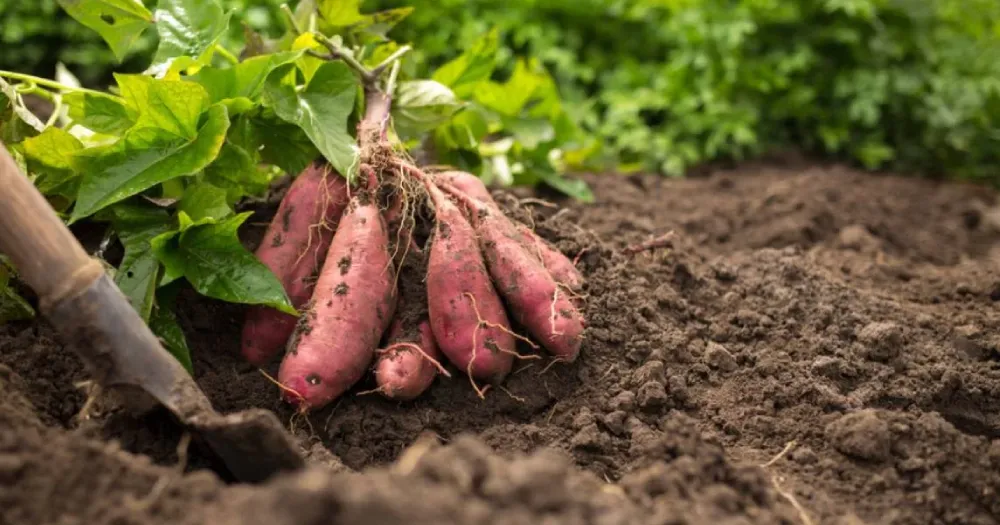Insight
The sweet potato (Ipomea batata) conquered the European market as early as the 16th century, even before the well-known potato. However, the sweet potato remained more of an exotic vegetable and the potato became an export hit at the time.
The sweet potato has been in vogue for a short time. In fact, it’s growing in popularity every year due to its nutritional benefits and delicious taste.
Culture
The most important foundations for a promising sweet potato production are favorable site conditions and the right planting material. Sweet potatoes thrive on both clay soil and light, sandy but nutrient-rich soil. They also need a sunny location. This makes the fertile fields of the delta and northern Egypt perfect for this culture.
Propagation usually takes place via the tubers, which originally come from certified seeds.
The dam method has proven to be particularly promising. With this technique, sweet potatoes can be successfully grown even on heavy soils.
Particular attention must be paid to the water supply. Although the sweet potato tolerates short periods of drought without any problems, later tuber formation can be negatively influenced by an uneven water supply.
In Egypt, the sweet potato only starts to form tubers in June. Before that, all the energy is put into sheet formation. The perfect harvest date is when the leaves turn yellowish (mid-July). At this time, the highest content of carbohydrates is in the tubers. Depending on the variety and planting date, tubers can also be harvested much later.
Varities
The sweet potato varieties differ in the color of the skin, the flesh and the shape of the leaves and tubers:
- Beauregard : Is the most cultivated variety in Egypt. It has a short cultivation period (90-95 days). The tuber has a red colored skin, the flesh is orange. It forms the largest tubers.
- Evangelina : Has a particularly fine taste. This may be due to the relatively high sugar content. The tuber color is red-purple and the flesh is orange. Culture duration: 100 – 110 days.
- Belle vue/Delphine : Also widespread in Egypt. This variety was developed in Louisiana to produce a sweeter, more nutritious sweet potato with a copper-colored skin and dark orange flesh. These tubers are relatively smaller than the previous ones, but have a more or less symmetrical shape and are more durable. The plants have distinctive purple foliage and are disease resistant.
Varieties with an orange flesh contain a lot of beta-carotene.
Harvest and Post-Harvest Procedures
In principle, the tubers dug up at the right time can be eaten immediately. However, the batatas initially have a high starch content and less sugar.
With a treatment, the so-called “curing”, the sugar content can be increased and this also extends the shelf life.
Curing
In this process, the freshly harvested sweet potatoes are placed in special climate chambers (5-7 days at 30 °C and 80-95% relative humidity).
Due to the hot and humid climate, the small skin wounds close and the starch turns into sugar.
Production
After curing, the tubers are washed with water and special brushes. They are then dried, calibrated according to weight, packaged and stored at temperatures between 12 and 16°C until shipment.
Export
Moorgate Trade ensures that their customers receive the orders smoothly.
We ensure that the documents are processed and processed quickly and that the loading and delivery is correct and careful.
Due to the location of our packing station, which is located between most of the production fields and the seaports in northern Egypt, as well as our reliable and long-standing relationships with both local transport providers and shipping companies, we are able to offer not only a range of high-quality products , but also to offer optimal logistics solutions.



